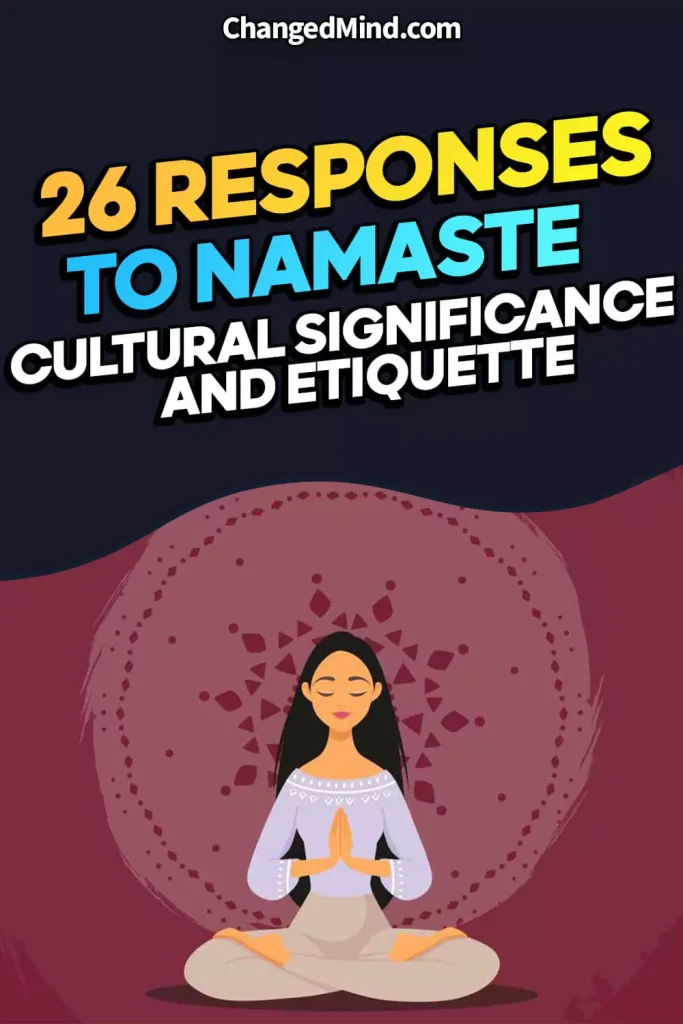Welcome, fellow curious souls, to the fascinating realm of greetings! Ever found yourself wondering, “What’s the proper response to Namaste?”
Well, worry not, for we’ve got you covered with 26 correct responses that will not only enlighten you but also bring a smile to your face. From the heartfelt “Namaste back” to the culturally rich variations, we’ll delve into the cultural significance and etiquette of this revered greeting.
So, join us on this joyful journey as we explore the art of Namaste and discover the secret to making meaningful connections. Let’s dive in and unravel the wonders of correct responses to Namaste!
In this article, we’ll cover:
- The origins and meaning behind Namaste
- Understanding the importance of cultural context in responses
- Exploring traditional responses from different regions and religions
- Fun anecdotes and heartwarming stories related to Namaste
- Tips to master the art of responding to Namaste gracefully
Get ready to embrace the beauty of cultural exchange and prepare to be amazed by the endless possibilities of a simple yet profound greeting. So, let’s embark on this delightful adventure together and unlock the magic of the correct responses to Namaste!
Namaste, a word of Sanskrit origin, holds significant cultural and spiritual significance in various parts of the world. Understanding the meaning and cultural context of Namaste is essential to appreciate its usage and appropriate responses.
The term “Namaste” translates to “I bow to you” or “The divine in me bows to the divine in you.” It is a customary Indian greeting, often accompanied by a pressed palms gesture and a slight bow of the head.
Namaste carries a profound spiritual connotation, symbolizing the recognition and honoring of the divine presence within oneself and others. It reflects the understanding that we are all connected and share a common essence of divinity.
In response to Namaste, there are various common expressions that embody respect, goodwill, and acknowledgement. These include:
- “Namaste” – a reciprocation of the greeting.
- “Namaste, How are you?” – extending a friendly inquiry about the person’s well-being.
- “Namaste, Nice to meet you.” – acknowledging the pleasure of making the person’s acquaintance.
- “Namaste, Thank you.” – expressing gratitude towards the person.
It is important to note that the use of Namaste and its responses may vary across different regions and cultures. In India alone, there are linguistic variations in greetings, each having its own nuances and cultural significance. Similarly, cultures outside of India may have their own adaptations of this greeting.
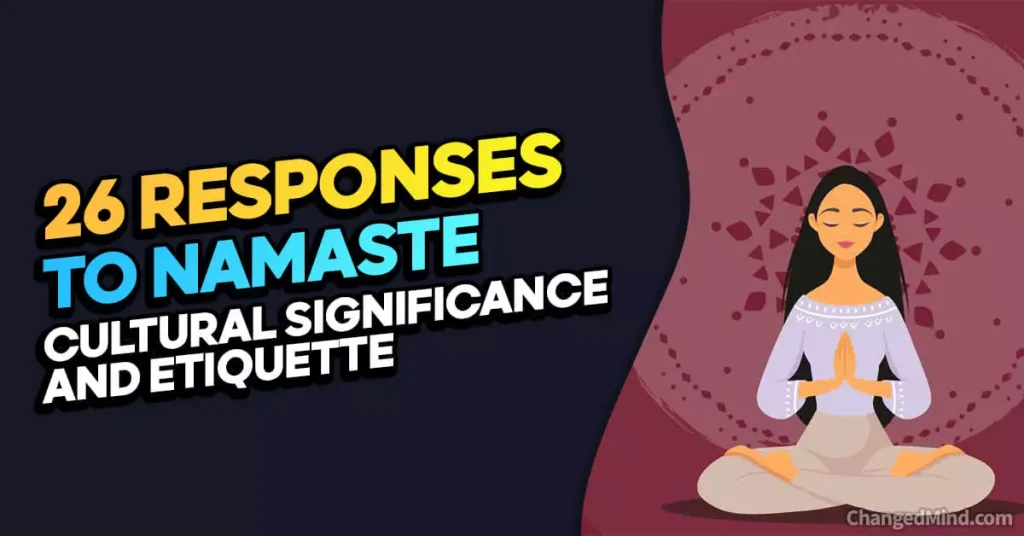
When engaging in Namaste or responding to it, cultural etiquette and sensitivity are crucial. It is essential to understand the appropriate situations to use Namaste and respond accordingly. Education and respectful observation of local customs can help ensure that Namaste is used appropriately and with cultural respect.
Namaste has also found modern interpretations and adaptations globally. It has become a popular greeting in the yoga and meditation communities, signifying unity, peace, and spiritual connection. Namaste has been embraced in contemporary cultural expressions, representing mindfulness, inclusivity, and a sense of shared humanity.
By delving into the meaning, cultural significance, appropriate responses, regional variations, and modern interpretations of Namaste, one can develop a deeper understanding and appreciation for this profound and widely used greeting.
Key takeaway:
- “Namaste” is a traditional greeting in India: The word “Namaste” has its origin in India and is commonly used as a respectful way to greet someone.
- Cultural significance of Namaste: Namaste holds traditional and spiritual significance in Indian culture, conveying respect and acknowledgement of the divine within each individual.
- Regional variations of Namaste: Different Indian languages have their own variations of greetings, but Namaste is widely understood and used across the country. Namaste also has variations in other cultures around the world.
- Appropriate etiquette and cultural sensitivity: Understanding when and how to use Namaste is important for cultural sensitivity. It is typically used in formal or respectful situations and can be responded to with a reciprocal Namaste or a polite response.
- Modern interpretations and adaptations of Namaste: Namaste has gained global recognition and is often used in yoga and meditation practices. It has also found its way into contemporary cultural expressions as a symbol of peace, respect, and unity.
What Does “Namaste” Mean?
“Namaste” is a term commonly used in yoga classes and serves as a traditional greeting in India and Nepal. Derived from the Sanskrit language, it holds significant cultural and spiritual importance.
When translated, the meaning of “Namaste” goes beyond a simple hello, representing a respectful greeting or salutation. It acknowledges the divine spark or consciousness within each person.

The term “Namaste” comprises two parts: “Nama” meaning “bow” or “salutation,” and “Te” which signifies “you.” Thus, when uttering “Namaste,” one is essentially saying, “I bow to you.”
By saying “Namaste,” individuals acknowledge and honor the interconnectedness of all living beings. It respects and recognizes the inherent goodness and divinity within oneself and others. Essentially, it expresses, “The divine in me recognizes and respects the divine in you.”
In the context of yoga or a yoga class, uttering “Namaste” at the conclusion expresses gratitude, respect, and unity with fellow practitioners. It fosters a sense of community and reminds individuals of their shared journey towards self-awareness and well-being.
Although the literal translation of “Namaste” is “I bow to you,” its deeper meaning encompasses embracing the unity of humanity. It serves as a reminder that all individuals are interconnected and that their actions and words impact others.
In an increasingly divided and disconnected world, the practice of saying “Namaste” gently reminds individuals to approach one another with kindness, compassion, and respect.
Fact: In 2021, the popularity of “Namaste” surged worldwide due to the COVID-19 pandemic. It became a symbol of unity and hope as people found solace in coming together, even virtually, and acknowledging the shared humanity that binds us all.
26 Correct Responses to Namaste

Here are 26 correct responses to the greeting “Namaste”:
- Namaste to you too!
- Hello, with a respectful nod.
- Peace and blessings to you.
- Good day!
- Greetings from my heart.
- Wishing you harmony and serenity.
- I honor the divine in you.
- May your day be filled with joy.
- Sending positive vibes your way.
- Respect and greetings.
- Salutations!
- Namaste, my friend.
- Warm wishes to you.
- May you be well.
- Divine greetings.
- Namaskar!
- Blessings of peace upon you.
- Welcome, with folded hands.
- Respectfully, Namaste.
- My best regards.
- Greetings and goodwill.
- Soulful salutations.
- I acknowledge your spirit.
- Joyous greetings to you.
- In unity and respect, Namaste.
- With reverence, I greet you.
Remember, the appropriate response may vary depending on cultural context and personal preference. Embrace the spirit of respect and connection when responding to Namaste!
Cultural Significance of Namaste
The cultural significance of Namaste lies in its deep-rooted meaning and practice in Indian culture. Namaste is a traditional Indian greeting that carries spiritual and respectful connotations.

Greeting and Respect: Namaste is commonly used as a greeting in India and is a way of showing respect to others. When saying Namaste, individuals bring their hands together in prayer position in front of their heart and bow their head slightly. This gesture symbolizes acknowledging the divine spark within each individual and expressing respect towards them.
Spiritual Connection: Namaste is more than just a polite greeting. It represents the recognition of the divine presence within oneself and others. By bowing and saying Namaste, individuals recognize the interconnectedness of all beings and the divine essence that resides in each person. It cultivates a sense of unity and acceptance.
Cultural Identity: Namaste is an integral part of Indian culture and serves as an expression of cultural identity. It is deeply ingrained in the traditions and customs of the country. The practice of Namaste reflects the values of humility, gratitude, and reverence that are highly regarded in Indian society.
Spiritual Practice: Namaste is not only a greeting but also a spiritual practice. It is often accompanied by a slight bow, which signifies surrendering the ego and embracing humility. The act of bringing the hands together at the heart center is believed to activate the heart chakra, fostering inner peace and spiritual connection.
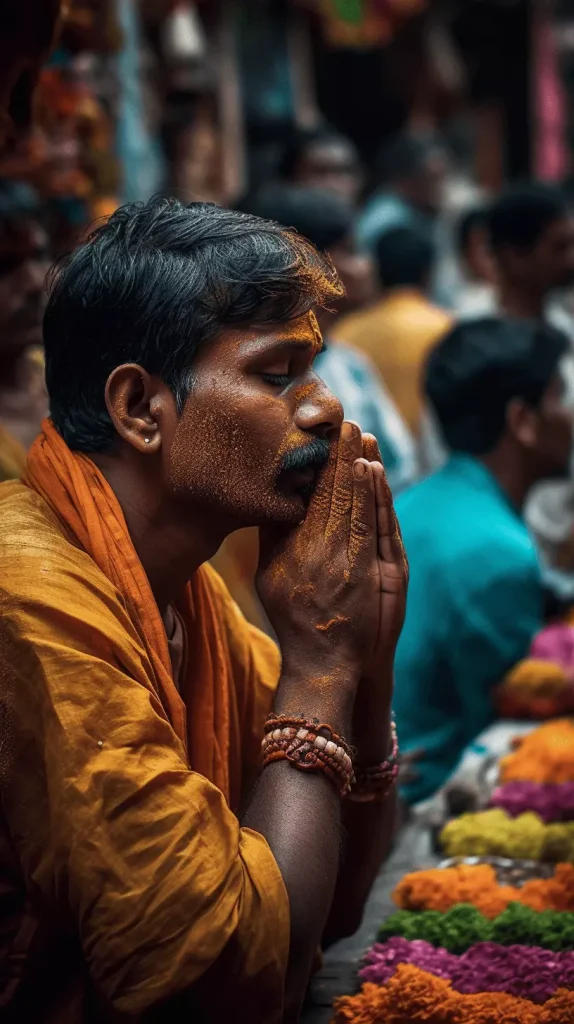
International Recognition: Over time, Namaste has gained recognition and popularity beyond India. It has become a symbol of spirituality, mindfulness, and respect across different cultures. People all over the world now use Namaste as a way to express gratitude, promote unity, and honor the spiritual traditions of India.
Namaste holds immense cultural significance as it embodies the values of respect, spirituality, unity, and cultural identity. Its widespread practice and recognition globally demonstrate its enduring impact and relevance in today’s multicultural world. By embracing and understanding the cultural significance of Namaste, individuals can foster a sense of connection, respect, and harmony with others and within themselves.
Origin and Meaning of Namaste
The origin and meaning of Namaste can be traced back to ancient India. This Sanskrit greeting is commonly used as a way to greet and show respect to others. Namaste is a combination of two Sanskrit words: “nama,” which means “bow” or “salute,” and “te,” which means “to you.” Therefore, Namaste can be understood as “I bow to you” or “I salute you.”
The gesture and meaning behind Namaste hold deep cultural and spiritual significance. When someone says Namaste, they are not only acknowledging the presence of the other person but also recognizing the divine spark within them. It is a way of acknowledging the interconnectedness and oneness of all beings.
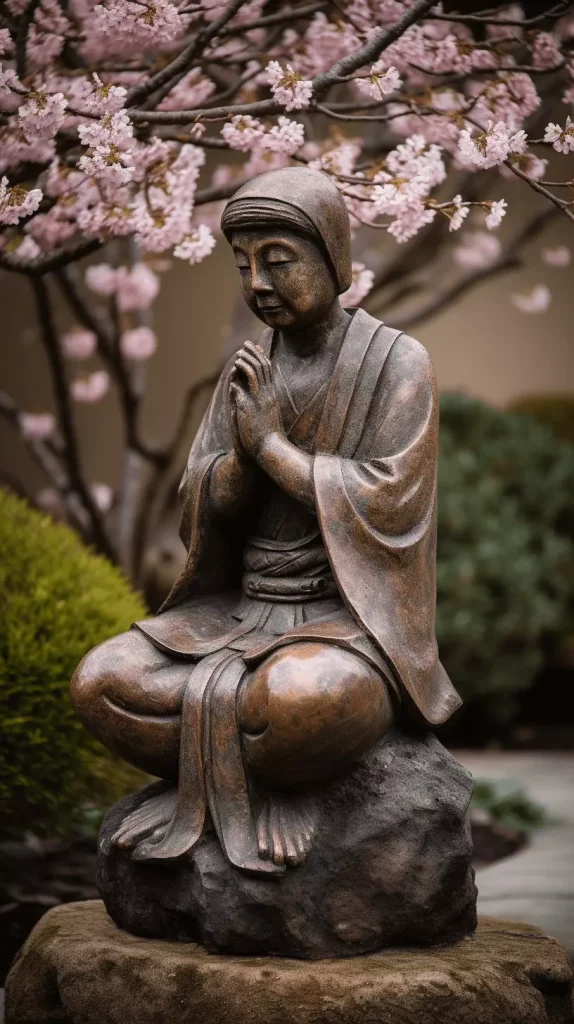
When performing the Namaste gesture, the hands are brought together in front of the chest in a prayer-like position, with the fingers extended upward. The palms are pressed against each other, and the fingertips are pointing towards the heart. This gesture symbolizes the coming together of the body, mind, and spirit.
Namaste is not just a simple greeting; it carries a sense of reverence and humility. It is a way to show respect to others and to recognize the divine in them. It fosters a sense of unity and harmony among individuals and promotes a culture of mutual respect.
In Indian culture, Namaste is used as a greeting in various contexts, such as when meeting someone for the first time, as a way to say goodbye, or when expressing gratitude. It is also commonly used in yoga classes as a way to begin and end the practice, acknowledging the inner light and wisdom within oneself and others.
Understanding the origin and meaning of Namaste can help us appreciate the depth and significance behind this simple yet powerful gesture. It reminds us to approach others with respect, kindness, and recognition of their inherent divinity. So, the next time you say Namaste, remember the profound meaning it holds.
Nervously joining a yoga class and hoping no one notices you can be summed up with just one word – namaste.
Traditional and Spiritual Context of Namaste
Namaste is not just a simple greeting but holds deep traditional and spiritual significance in Indian culture. It is important to understand the traditional and spiritual context of Namaste to fully appreciate its meaning and use it appropriately.
In the traditional context, Namaste is derived from Sanskrit and is a combination of the words “namah,” meaning “bow” or “obeisance,” and “te,” meaning “to you.” Thus, Namaste can be translated as “I bow to you” or “I honor the divine within you.” It is a way of showing respect and acknowledging the presence of the divine in every individual.
Spiritually, Namaste is seen as a way to cultivate a sense of unity and connection. By bringing our hands together in prayer position and bowing our heads, we are recognizing the divine spark within ourselves and others. It is a gesture of humility, surrender, and gratitude.
When using Namaste, it is important to remember that it is not just a casual greeting but a sacred gesture. It should be used with sincerity and authenticity. Namaste can be used in various situations, such as when meeting someone for the first time, expressing gratitude, or bidding farewell. It is a way to acknowledge the divine presence in others and strengthen the bond of unity.
In yoga and meditation practices, Namaste is commonly used to conclude a session. It is a way to honor the teacher and express gratitude for the wisdom and guidance received. It also serves as a reminder to carry the peace and harmony experienced during the practice into daily life.

Namaste is more than just a simple greeting – it’s like saying may your WiFi always be strong, and your phone never die.
“Namaste”
Namaste is a traditional Indian greeting that holds deep meaning and significance. When used, it symbolizes respect, humility, and acknowledgment of the divine presence in each other. Here are some key aspects to consider when exploring the concept of Namaste:
- Cultural Context: Namaste originates from the Indian subcontinent and is widely used in Hindu, Buddhist, and Jain cultures. It is a gesture of greeting, salutation, and farewell.
- Meditative Connection: Namaste is often accompanied by joining the palms together in front of the chest, fingers reaching towards the sky. This mudra (hand gesture) is believed to bring the right and left hemispheres of the brain together, promoting a sense of balance and unity.
- Meaningful Intent: Namaste is not a mere hello; it carries a deeper intention. It reflects acknowledgement and honor towards the other person’s intrinsic divinity and the shared connection between souls.
- Respectful Etiquette: When greeting someone with Namaste, it is customary to bow slightly or nod the head. It is a gesture of showing reverence and treating others with dignity, regardless of social status or hierarchy.
- Universal Appeal: While originating from the Indian culture, Namaste has gained recognition and popularity worldwide. Its inclusive nature makes it suitable for various contexts, promoting harmony and respect across diverse communities.
- Spiritual Significance: Namaste is considered a way to cultivate inner peace and unity. By acknowledging the divine in others, it helps foster a sense of interconnectedness, compassion, and spiritual growth.
- Application in Yoga: In yoga practices, Namaste is often used at the beginning and end of each session as a way to honor the teacher, fellow practitioners, and the sacred space created during the practice.
When engaging with the concept of Namaste, it is essential to approach it with sincerity and respect. It is a powerful gesture that transcends boundaries and invites a sense of unity and mindfulness. Incorporating Namaste into our interactions can enhance our overall well-being and promote a deeper understanding of our shared humanity.
2. “Namaste, How are you?”
Namaste is a common greeting used in many cultures, particularly in India. When someone says “Namaste, how are you?” they are combining the traditional greeting of Namaste with a question about the person’s well-being. It is a polite and respectful way to inquire about someone’s health or mood.
The word “Namaste” itself is derived from Sanskrit and translates to “I bow to you” or “I honor you.” It is usually accompanied by a slight bow or placing of the hands together in front of the chest, with the palms touching. This gesture is called “anjali mudra” and is a sign of respect and humility.
When someone responds to “Namaste, how are you?” they may answer with simple greetings like “I am fine, thank you” or “I am doing well, how about you?” It is a polite exchange of pleasantries and a way to show genuine interest in another person’s well-being.

In Indian culture, it is considered appropriate to reciprocate the greeting and inquire about the other person’s well-being before continuing with any other conversation. It is a way to show respect and establish a positive connection.
Using the greeting “Namaste, how are you?” is a way to foster a sense of connection and goodwill. It acknowledges the other person’s presence and shows that you care about their well-being. It is a simple gesture that can help create a positive atmosphere and promote meaningful interactions.
So next time you greet someone with “Namaste, how are you?” remember that you are not only exchanging pleasantries but also acknowledging their importance and showing genuine care.
Fact: Did you know that the word “Namaste” is also used as a parting greeting, which means “goodbye” or “farewell” in some contexts? It is a versatile phrase that can be used in different situations to convey respect and goodwill.
3. “Namaste, Nice to meet you.”
When you greet someone with “Namaste, nice to meet you,” you are using a traditional Sanskrit greeting to show respect and acknowledge the other person’s presence. This phrase is commonly used in Indian culture and has gained popularity around the world.
“Namaste” is derived from the Sanskrit words “nama” which means “to bow” and “te” which means “to you.” It is a way of acknowledging the divine spark within each individual and recognizing the unity of all beings.
When you say “Namaste, nice to meet you,” you are expressing your appreciation for the other person and the opportunity to connect with them. It is a warm and friendly greeting that conveys a sense of gratitude and well-wishing.
In Indian culture, it is customary to greet someone with “Namaste” by folding your hands in front of your chest and slightly bowing your head. This gesture shows humility and respect. The response to “Namaste, nice to meet you” is often another “Namaste” or “Namaste, Khush Raho,” which means “Namaste, may you be happy.”
Using “Namaste, nice to meet you” is a simple and meaningful way to connect with others, regardless of their cultural background. It promotes a sense of unity and goodwill.

I recently attended a yoga class where the teacher greeted each student with a warm “Namaste, nice to meet you.” It immediately created a welcoming and inclusive atmosphere. Throughout the class, we practiced various yoga poses and breathing exercises, all while maintaining a sense of respect and mindfulness towards ourselves and each other.
At the end of the class, we closed with a collective “Namaste” and a sense of shared gratitude for the experience. It was a beautiful reminder of the power of simple greetings to cultivate a sense of unity and connection.
Namaste, Thank you. – The only way to show gratitude and flex those spiritual muscles at the same time.
4. “Namaste, Thank you.”
When saying “Namaste, thank you,” it is a polite and respectful way to express gratitude in the context of the Sanskrit greeting “Namaste.” By incorporating “thank you” into the greeting, it adds an extra level of appreciation and acknowledgment.
In Hindu culture, expressing gratitude is highly valued, and “Namaste, thank you” reflects this cultural emphasis. The phrase “Namaste, thank you” signifies a deep sense of gratitude and respect towards the person you are addressing. When saying “Namaste, thank you,” you are not only acknowledging their presence but also expressing your appreciation for their actions or words.
It is important to note that when saying “Namaste, thank you,” it should be done sincerely and with genuine appreciation. It is not just a perfunctory response but a way to convey your heartfelt gratitude. This combination of the Sanskrit greeting and the expression of thanks helps to foster positive connections and build stronger relationships.
When using “Namaste, thank you” in everyday situations, such as in a yoga class or when interacting with someone who has helped you, the combination of these two phrases can create a beautiful and meaningful exchange. It can enhance the sense of harmony, gratitude, and mutual respect between individuals.
The phrase “Namaste, thank you” holds power beyond its literal meaning. It is a way to cultivate a sense of gratitude and appreciation in our interactions with others. By incorporating “Namaste, thank you” into our daily lives, we can foster a culture of kindness and gratitude.
From ‘Namaskar’ to ‘Salaam,’ discover how different cultures greet with a twist, because waving hello can be so boring.
Regional Variations of Namaste

When it comes to greetings, the world is a diverse place, and the regional variations of Namaste reflect this beautifully. From the different greetings in Indian languages to the variations of Namaste in other cultures, this section takes us on a journey across borders and languages.
Discover the fascinating ways in which people greet each other, and unravel the unique customs and traditions that make each greeting special. Get ready for a cultural exploration like no other!
Different Greetings in Indian Languages
India, being a culturally diverse country, has a plethora of greetings in various Indian languages that are used to convey respect, good wishes, and acknowledgement. Let’s explore some examples:
- Namaskar: This is a commonly used greeting in Hindi and other North Indian languages to show respect. It is often accompanied by a slight bow and folded hands at the chest level.
- Vanakkam: In Tamil, “Vanakkam” is a formal greeting similar to “Namaskar.” It is expressed with a slight nod of the head and folded hands.
- Namaskara: Kannada language has its equivalent of “Namaskar” known as “Namaskara.” It is used to greet someone respectfully, accompanied by folded hands and a slight bow.
- Pranam: “Pranam” is a widely used greeting in Bengali, Marathi, Gujarati, and other Indian languages. It signifies respect and is conveyed with folded hands and a slight bow.
- Abhivadan: Sanskrit has its own formal and respectful greeting called “Abhivadan,” which is accompanied by folded hands and a slight bow.
- As-salamu alaykum: Although not exclusive to Indian languages, Muslims in India, especially in Urdu-speaking regions, commonly use this Islamic greeting. It means “peace be upon you” and is conveyed with a handshake or a slight bow.
Greetings in India vary based on the region, language, and cultural practices. It is crucial to be aware of the specific greeting used in a particular context and respond accordingly. When encountering different greetings in Indian languages, it is respectful to reciprocate with the same greeting or a similar one.
When interacting with individuals from different cultures, it is always appreciated to greet them in their native language. This small gesture demonstrates respect and helps establish a positive connection. Learning and utilizing different greetings in Indian languages not only enhance cultural understanding but also make your interactions more meaningful and respectful.
So the next time you meet someone from India or find yourself in a multicultural setting, consider using one of these greetings to show your appreciation for their culture and language.
Namaste in India, Aloha in Hawaii, and Hola in Spain – it’s like the United Nations of greetings!
Variations of Namaste in Other Cultures

When it comes to the greeting “Namaste,” it is not limited to just Indian culture. This respectful salutation has Variations of Namaste in Other Cultures as well, reflecting the diversity of greetings around the world. Let’s explore the variations of Namaste in other cultures.
| Culture | Greeting Variation |
|---|---|
| Nepal | “Namaskar” |
| Bhutan | “Kuzuzangpo” |
| Tibet | “Tashi Delek” |
| Thailand | “Wai” |
| Japan | “Bowing” |
| Hawaii | “Aloha” |
| Maori (New Zealand) | “Hongi” |
In Nepal, people greet each other with “Namaskar,” which is similar to the Hindi “Namaste.” In Bhutan, “Kuzuzangpo” is used as a form of greeting, expressing a wish for happiness and well-being. In Tibet, the greeting “Tashi Delek” is commonly used, conveying good luck and auspiciousness.
Moving beyond Asia, in Thailand, the traditional greeting known as the “Wai” involves placing the palms together in a prayer position and bowing slightly. In Japan, bowing is a common way to greet others, showing respect and acknowledging the other person’s presence.
In the beautiful islands of Hawaii, “Aloha” is used as a greeting, representing love, affection, and peace. The Maori people of New Zealand have their own unique greeting called the “Hongi,” which involves pressing one’s nose and forehead against another person’s as a sign of respect and unity.
These variations of greetings in different cultures reflect the values and traditions of each community. It is truly fascinating to see how expressions of respect and connection can differ across the globe while sharing a common intention.
Appropriate Etiquette and Cultural Sensitivity
Appropriate etiquette and cultural sensitivity are crucial aspects when interacting with people from different cultures. It is essential to be respectful and mindful of different customs, traditions, and social norms. Here are some guidelines to follow for practicing appropriate etiquette and cultural sensitivity:
1. Research and Educate Yourself: Take the time to learn about the culture and customs of the individuals or group you will be interacting with. This will help you understand and appreciate their traditions, values, and beliefs.
2. Respect Personal Space: Be aware of personal space boundaries, as they can vary from culture to culture. Some cultures may prefer closer proximity during conversations, while others may require more personal space.
3. Greetings and Gestures: When greeting others, it is important to use appropriate greetings based on the cultural norms. For example, in some cultures, a handshake is the standard greeting, while in others, bowing or a slight nod is more appropriate. Avoid using gestures that may be considered offensive or inappropriate.
4. Communication Styles: Be mindful of communication styles, as they can differ across cultures. Some cultures may prefer direct and assertive communication, while others may value indirect and more subtle forms of communication. Pay attention to non-verbal cues such as body language and facial expressions to gauge understanding and respect cultural differences.
5. Dining Etiquette: If you are invited to a meal, familiarize yourself with dining etiquette specific to that culture. This includes table manners, handling utensils, and respecting any dietary restrictions or customs.
6. Dress Code: Dress appropriately according to the cultural norms when attending events or visiting places of worship. Respect any guidelines regarding modesty, traditional attire, or specific color choices.
7. Gift Giving: If you are giving a gift, consider the cultural significance and appropriateness of the item. Some cultures have specific customs and traditions when it comes to gift-giving, such as presenting a gift with both hands or avoiding certain colors or symbols.
8. Active Listening and Open-Mindedness: Show genuine interest in others’ cultures by actively listening and asking thoughtful questions. Be open-minded and receptive to different perspectives and experiences.
Remember, appropriate etiquette and cultural sensitivity promote understanding, respect, and meaningful connections with people from diverse backgrounds. By being mindful of these guidelines, you can foster positive interactions and build strong relationships.
When to Use Namaste?
Understanding when to use Namaste is crucial for appreciating the cultural importance of this traditional greeting. Here are some key factors to consider:
- When meeting someone for the first time: Namaste is commonly employed as a courteous greeting when meeting someone for the first time, particularly in formal or traditional settings.
- During religious or spiritual ceremonies: Namaste is frequently utilized during religious or spiritual ceremonies as a gesture of reverence and respect towards the divine. It is often accompanied by the pressing together of the palms in front of the chest.
- In yoga and meditation: Namaste is commonly used at the commencement and conclusion of a yoga or meditation session to honor the teacher and fellow practitioners. It symbolizes the acknowledgement of the divine within oneself and others.
- When visiting India or engaging with Indian culture: If you are traveling to India or interacting with Indian culture, utilizing Namaste is a respectful way to greet individuals and demonstrate appreciation for their traditions. It can facilitate the establishment of positive connections and foster cultural understanding.
- When showing respect to elders: In Indian culture, Namaste is often employed to pay respect to elders. It is a gesture to acknowledge their wisdom and experience.
Suggestions for incorporating Namaste into your daily life:
- Consider integrating Namaste into your yoga or meditation practice as a means of honoring the spiritual aspects of these activities.
- Take the time to delve into the cultural importance of Namaste and the traditions it embodies.
- When traveling to India or engaging with Indian culture, make a genuine effort to use Namaste as a courteous greeting.
- Encourage others to embrace the essence of Namaste by explaining its meaning and significance.
How to Respond to Namaste Appropriately?
When someone greets you with “Namaste,” it is important to respond appropriately. Here are some steps to help you respond to “Namaste” in the right way:
- Return the greeting: The most common response to “Namaste” is to say “Namaste” back. This acknowledges the greeting and shows respect.
- Add a polite question: To further engage in the conversation, you can respond with “Namaste, How are you?” This shows that you are interested in the well-being of the person greeting you.
- Express pleasure in meeting: If you are meeting someone for the first time, you can respond with “Namaste, Nice to meet you.” This conveys a sense of warmth and friendliness.
- Show gratitude: If someone offers you a kind gesture or helps you, you can respond with “Namaste, Thank you.” This expresses your appreciation for their kindness.
Remember, these responses are appropriate when interacting with someone who uses “Namaste” as a greeting. It is essential to be respectful of other cultures and their customs by responding in a way that aligns with their traditions.
By following these steps, you can respond to “Namaste” appropriately and demonstrate your understanding and acceptance of this traditional greeting.
From global greetings to yoga class essentials, Namaste has transcended cultural boundaries and found its place in contemporary cultural expressions.
Modern Interpretations and Adaptations of Namaste
Welcome to the world of modern interpretations and adaptations of Namaste! In this section, we’ll uncover fascinating dimensions of this ancient greeting. From its global appeal to its significance in yoga and meditation, we’ll explore how Namaste has traversed time and cultures.
Additionally, we’ll delve into the intriguing ways Namaste finds expression in contemporary culture, shedding light on its continued relevance in our ever-evolving world. Get ready to immerse yourself in the rich tapestry of Namaste‘s contemporary journey!
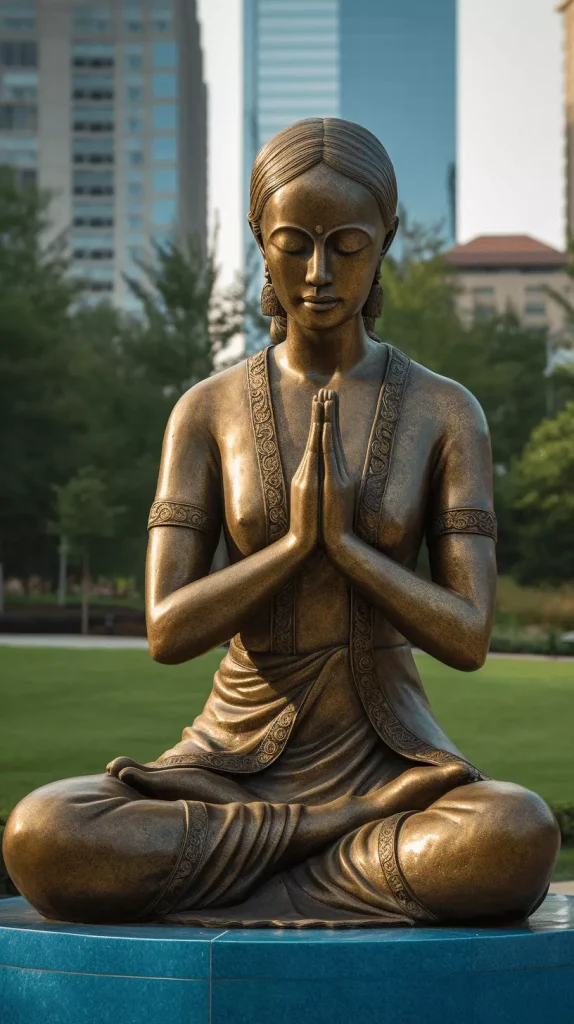
Namaste as a Global Greeting
Namaste, as a global greeting, has transcended borders and become a symbol of cultural respect, unity, and spirituality. It originated in India but has been embraced by people worldwide for various reasons:
- Cultural appreciation: By using namaste, individuals show respect and appreciation for Indian culture, embracing diverse cultural traditions.
- Promotes unity: Namaste acknowledges the divine spark within each person, fostering a sense of oneness and connection between people.
- Spiritual significance: Namaste holds deep meaning for those interested in spirituality, as it recognizes the divine presence within oneself and others.
- Yoga and meditation: With the increasing popularity of yoga and meditation practices, namaste has also gained prominence. It is commonly used in yoga classes to greet and show respect to the teacher and fellow practitioners.
- Simple and widely understood: Namaste is a simple greeting that transcends language barriers, easily understood and appreciated by people from different cultures and backgrounds.
Namaste as a global greeting showcases the power of language to connect people across borders and cultures. It has become more than just a word; it is now a universal symbol of respect, unity, and spirituality.
Namaste in Yoga and Meditation: Where saying ‘hello’ turns into finding inner peace, flexibility, and a contorted interpretation of personal space.
Namaste in Yoga and Meditation
In the practice of yoga and meditation, the greeting “Namaste” has great significance. This Sanskrit word is widely recognized and embraced in the global yoga community. When used in the context of these practices, “Namaste” goes beyond a simple greeting and encompasses deep spiritual and philosophical meanings.
1. Spiritual Connection: In yoga and meditation, “Namaste” is often used to honor the divine spark within oneself and others. It recognizes the inherent interconnectedness and unity of all beings. By saying “Namaste,” practitioners acknowledge and respect the inner light or divine presence in each other.
2. Cultivating Peace and Presence: When practicing yoga or meditation, saying “Namaste” at the beginning or end of a session can help create a sacred and mindful space. It serves as a reminder to cultivate peace, mindfulness, and presence throughout the practice. It encourages practitioners to approach their practice with gratitude and an open heart.
3. Expressing Gratitude: “Namaste” is also a way of expressing gratitude and appreciation. It is an acknowledgment of the teacher, their guidance, and the wisdom they share. By saying “Namaste,” practitioners show respect and humility towards their teacher, recognizing the profound impact they have on their practice and personal growth.
4. Unity and Oneness: In yoga and meditation, the ultimate goal is to experience the union of body, mind, and spirit. “Namaste” symbolizes this union and reminds practitioners of their connection to something greater than themselves. It reflects the idea that we are all part of a universal energy and interconnected web of existence.
5. Creating Positive Energy: Saying “Namaste” in a yoga or meditation class helps to create a positive and supportive community environment. It fosters a sense of unity, inclusivity, and respect among practitioners. It encourages everyone to come together, leaving behind any judgments or ego-driven thoughts, and instead focusing on collective growth and transformation.
Namaste in Contemporary Cultural Expressions
To understand the significance of namaste in contemporary cultural expressions, it is important to recognize how this traditional Sanskrit greeting has evolved and become incorporated into various aspects of modern society.
| Namaste in Contemporary Cultural Expressions – Social Settings | Namaste in Contemporary Cultural Expressions – Art and Entertainment | Namaste in Contemporary Cultural Expressions – Celebrations and Festivals |
| Namaste has become a popular greeting in social settings around the world. Whether among friends, acquaintances, or even strangers, saying namaste conveys respect and goodwill. It is often used as a simple and universal way to acknowledge and greet others. | In the world of art and entertainment, namaste has found its place as a symbol of cultural respect. Artists and performers often incorporate namaste in their work to highlight the values of unity and harmony. It has become a common gesture during stage performances, concerts, and even in movies and television shows. | During celebrations and festivals, namaste is frequently used to express gratitude and joy. It has become a part of traditional rituals in many cultures, emphasizing the spirit of togetherness and reverence. Whether it’s a wedding, religious ceremony, or cultural event, namaste is seen as a way to honor and connect with others. |
Furthermore, namaste has gained popularity in settings such as yoga classes and meditation retreats. It has become synonymous with mindfulness and spiritual practices, representing the connection between body, mind, and soul. By saying namaste at the beginning or end of a class, individuals cultivate a sense of unity and respect for one another.
In contemporary cultural expressions, namaste serves as a bridge between different communities and beliefs. It promotes understanding, acceptance, and cultural diversity. It is no longer confined to its origins but has transcended borders, becoming a global greeting that promotes unity and peace in an increasingly interconnected world.
Some Facts About Responses to Namaste:
- ✅ Namaste is a Sanskrit greeting that originated from Hindu culture.
- ✅ The literal meaning of namaste is “I bow to you.”
- ✅ In the Sanskrit language, common responses to namaste include “namaste” or “namo namah,” both of which mean “I bow to you.”
- ✅ “Pranaam” is a greeting reserved for spiritual leaders and is used to show respect in sacred places or holy temples.
- ✅ English responses to namaste can include “hello,” “goodbye,” “God bless you,” and “peace be unto you.”
Frequently Asked Questions
What is the meaning of the Sanskrit greeting “Namaste”?
Namaste is a Hindi word used to greet someone, especially older individuals, and it means “I bow to you” or “The divine in me bows to the divine in you.” It is a common greeting in Indian culture and is often accompanied by a small bow and the palms of the hands placed together in front of the chest.
How should I respond when someone says “Namaste” to me?
The appropriate response to namaste is to say it back to the person who greeted you. In Sanskrit, you can respond with “namaste,” “namo namah,” or “namaskāraḥ.” These responses mean “I bow to you” and show humility and love. Alternatively, you can use English replies such as “hello,” “good morning/afternoon/evening,” “God bless you,” “goodbye,” “greetings from this side,” “peace be unto you,” “and you too,” “Shalom,” “you are welcome,” “may you find happiness,” “here?,” and “have a nice day.”
Are there any specific responses based on age or authority?
Yes, there are specific responses to use based on the age or authority of the person greeting you. “Namo namah” or “namaste” can be used in general, but “namaskāraḥ” is a more polite response to use when greeting someone older or in authority. “Sukhino bhava” means “I wish you happiness” and can be used as a small prayer to wish well to someone younger than you. “Jeete Raho” means “God bless you” and is more appropriate for people younger than you. “Namaste khush Raho” means “be happy” and should be used with caution to avoid offending older people. “Pranaam” is a greeting reserved for spiritual leaders and should be used to show respect in sacred places or holy temples.
Is it acceptable to use gestures instead of words in response to Namaste?
Yes, it is acceptable to use gestures instead of words in response to namaste. You can respond with a smile, wave, nod, Añjali mudr (placing palms together close to the chest with a slight bow), or Pranamasana (standing Añjali mudra without bowing). These gestures also convey respect and acknowledgement of the greeting.
What is the cultural and religious significance of Namaste?
In Hindu culture, namaste is considered a part of their belief system, where everything and everyone is seen as divine. It is a way of acknowledging the divine in others and showing respect. However, this belief conflicts with Christianity, which teaches that humans are not gods and should only bow to the one true God, Yahweh. It is important to understand and respect the cultural and religious significance of namaste, and not use it in a superficial or trendy way.
Can namaste be used in non-Indian cultures or contexts?
Namaste can be seen as a preferred form of greeting in certain situations. For example, it can be used to avoid awkwardness when greeting someone at an inconvenient time or when on an international call with people in different time zones. It is also considered more respectful than other greetings like “how are you,” which often lack sincerity. However, it is important to assess the situation and context of the greeting before responding to avoid any mistakes.
